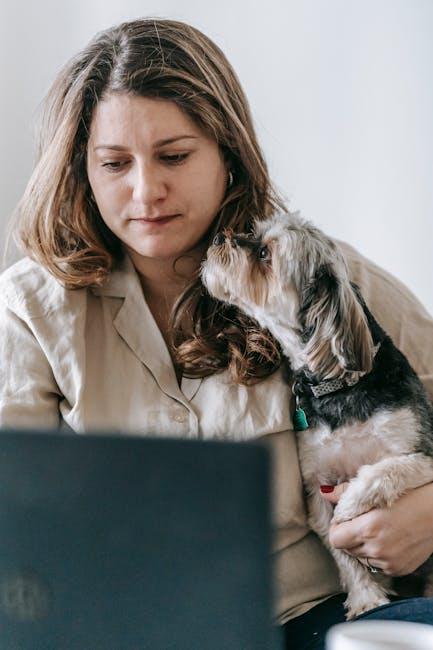Welcoming a dog into your life is like opening the door to a world of wagging tails, playful barks, and joyful companionship. As pet owners, we cherish the moments our furry friends romp around in the park, their exuberance matched only by the delight of making new canine acquaintances. But amidst the laughter and playful growls, a question often lingers in the minds of many: Is it safe to let your dog play with strangers’ dogs? Understanding the dynamics of canine interactions is essential for ensuring these encounters are both enjoyable and secure. In this article, we’ll explore the factors to consider when introducing your dog to new four-legged friends, providing guidance to help you navigate these social situations with confidence and care.
Understanding Canine Social Dynamics for Safer Play
When observing a group of dogs at play, it can sometimes be difficult to interpret their interactions. Yet, understanding canine social dynamics is crucial to ensuring a safe and enjoyable experience for your pet. Dogs communicate primarily through body language, and by paying close attention, you can gauge the temperament and intentions of the dogs involved. Look for signs such as loose and wagging tails, play bows, and soft, relaxed ears as indicators of friendly play. Conversely, be wary of behaviors like stiff body posture, prolonged staring, and raised hackles, which might suggest tension or aggression.
To foster a positive play environment, consider these key guidelines:
- Supervise: Always keep a watchful eye on your dog and the other dogs present.
- Size and energy level: Pair dogs with similar sizes and energy levels to prevent accidents.
- Know your dog: Be aware of your dog’s social skills and comfort level with other dogs.
- Intervene when necessary: Don’t hesitate to step in if play becomes too rough or if any dog seems uncomfortable.
By understanding these dynamics and being proactive, you can help ensure that your dog’s playtime with unfamiliar dogs is both safe and fun.

Recognizing Signs of Stress and Discomfort in Dogs
Understanding your dog’s emotional state is crucial when introducing them to unfamiliar canine companions. Dogs communicate their feelings through body language, and recognizing these signals can prevent potential conflicts. Look for signs such as:
- Tense body posture: A stiff body can indicate unease or aggression.
- Flattened ears: This often suggests anxiety or fear.
- Lip licking or yawning: Common signs of stress in dogs.
- Raised hackles: Indicates heightened arousal, which could be excitement or aggression.
- Tail position: A low or tucked tail might mean fear, while a high, stiff tail can signal dominance or aggression.
By observing these cues, you can make informed decisions about your dog’s interactions, ensuring their playtime is both safe and enjoyable. Always prioritize your dog’s comfort and be ready to intervene if you notice any signs of distress.

Creating Positive Play Experiences with New Canine Friends
When considering letting your dog mingle with new furry companions, it’s crucial to ensure a harmonious and safe interaction. Begin by observing the other dog’s behavior from a distance. Look for signs of friendliness such as a wagging tail, relaxed body posture, and open mouth. On the other hand, steer clear of dogs displaying aggression, excessive barking, or intense staring. A few key steps to facilitate positive play experiences include:
- Assess the Environment: Choose a neutral, open space free from potential triggers like toys or food that could lead to possessive behavior.
- Monitor Body Language: Pay attention to both dogs’ signals. Playful bounces and reciprocal movements are good signs, while stiff postures or growling may require intervention.
- Engage in Short Sessions: Start with brief play periods, gradually increasing the time as the dogs become more comfortable with each other.
By mindfully guiding these initial interactions, you help lay the foundation for joyful and safe playtime adventures, fostering a community of well-socialized and happy dogs.

Tips for Supervised and Secure Dog-to-Dog Interactions
Ensuring safe and enjoyable interactions between dogs requires a balance of supervision and understanding of canine behavior. Before introducing your dog to a new playmate, observe the other dog’s body language for signs of stress or aggression. Tail wagging is not always a sign of friendliness; watch for a relaxed body posture and soft eyes instead. It’s crucial to have a conversation with the other dog’s owner about their pet’s temperament and play style. This helps set expectations and ensures both dogs are comfortable with the meeting.
- Neutral Territory: Arrange the first meeting in a neutral space to prevent territorial behavior.
- Short Leashes: Use short leashes initially to maintain control and prevent sudden lunges.
- Positive Reinforcement: Reward calm and friendly behavior with treats or praise to encourage positive interactions.
- Time Limits: Keep the first few play sessions brief to avoid overstimulation or fatigue.
- Body Language Awareness: Stay vigilant for signs of discomfort or aggression, such as raised hackles or growling, and separate the dogs if necessary.
With these strategies, you can create a safe environment where your dog can socialize and build positive relationships with other dogs. Remember, every dog is unique, and patience is key to fostering healthy dog-to-dog interactions.

